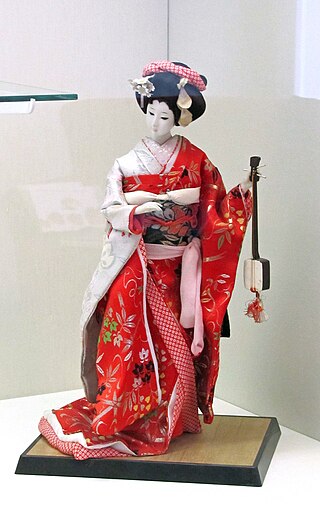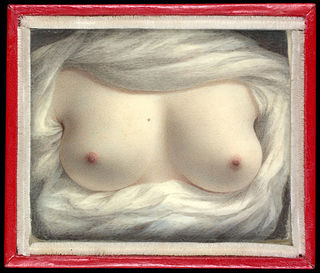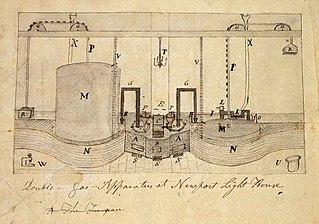
A doll is a model typically of a human or humanoid character, often used as a toy for children. Dolls have also been used in traditional religious rituals throughout the world. Traditional dolls made of materials such as clay and wood are found in the Americas, Asia, Africa and Europe. The earliest documented dolls go back to the ancient civilizations of Egypt, Greece, and Rome. They have been made as crude, rudimentary playthings as well as elaborate art. Modern doll manufacturing has its roots in Germany, from the 15th century. With industrialization and new materials such as porcelain and plastic, dolls were increasingly mass-produced. During the 20th century, dolls became increasingly popular as collectibles.

Japanese dolls are one of the traditional Japanese crafts.

Linoleum is a floor covering made from materials such as solidified linseed oil (linoxyn), pine resin, ground cork dust, sawdust, and mineral fillers such as calcium carbonate, most commonly on a burlap or canvas backing. Pigments are often added to the materials to create the desired colour finish. Commercially, the material has been largely replaced by sheet vinyl flooring, although in the UK and Australia this is often still referred to as "lino".
Ella Gauntt Smith was an innovative American doll manufacturer.

A china doll is a doll made partially or wholly out of glazed porcelain. The name comes from china being used to refer to the material porcelain. Colloquially the term china doll is sometimes used to refer to any porcelain or bisque doll, but more specifically it describes only glazed dolls.
A Black doll is a doll of a black person. Black doll manufacture dates back to the 19th century, with representations being both realistic and stereotypical. More accurate, mass-produced depictions are manufactured today as toys and adult collectibles.

Sasha Morgenthaler (1893–1975) was a Swiss artist and dollmaker, best known for the "Sasha doll" produced in Germany and the United Kingdom beginning in the late 1960s. Popular with collectors, Sasha dolls are characterized by their individualism, their realistic expressions, their unique color, and the extreme attention to detail in the manufacture of the dolls as well as their clothes. It is said by Juliette Peers that: "Sasha dolls are renowned for possessing a solid intellectuality." Morgenthaler created face sculpts for her dolls with subtle expressions, not artificially exaggerated smiles: her concern was that children surviving the horrors of WWII would not relate to such happy dolls in times of terror. It was said of Morgenthaler herself, as a child, that "When she was sad, she did not like her dolls uncompromising smiles. Once she grabbed a nail file and scraped off her doll's false grin..." In her own words, "No grotesque caricature can awaken a child's true feelings. A piece of wood, barely carved, is far superior to a conventional doll with an exaggerated smile."

Variety Unit is an exhibit building at Shelburne Museum in Shelburne, Vermont.

Annalee Dolls, Inc., also known as Annalee Mobilitee Dolls Inc., and AMD Holdings Inc., is a company located in Meredith, New Hampshire, that manufactures collectible dolls. The company was founded by Barbara Annalee Davis, who died in 2002. The state of New Hampshire hired Davis to create dolls to help promote tourism to the state and, in the 1950s, the dolls started to appear in store windows of department stores in Manchester and Boston. At the company's height, it filled over 14 acres (5.7 ha) of land, dotted with seven buildings containing 34,000 square feet (3,200 m2) of space, and had US$15 million in sales with 300 employees. The popularity of Annalee Dolls led R. Stuart Wallace to write that "the most famous manufactured item to come from New Hampshire in the 20th century is the Annalee doll." Annalee Dolls have reached up to $6,000 at auction. In 2008, the company closed its museum and sold its Meredith factory while as of 2006, there were only 30 employees.

A bisque doll or porcelain doll is a doll made partially or wholly out of bisque or biscuit porcelain. Bisque dolls are characterized by their realistic, skin-like matte finish. They had their peak of popularity between 1860 and 1900 with French and German dolls. Bisque dolls are collectible, and antique dolls can be worth thousands of dollars. Antique German and French bisque dolls from the 19th century were often made as children's playthings, but contemporary bisque dolls are predominantly made directly for the collectors market.

Beauty Revealed is an 1828 self-portrait by the American artist Sarah Goodridge, a watercolor portrait miniature on a piece of ivory. Depicting only the artist's bared breasts surrounded by white cloth, the 6.7-by-8-centimeter painting, originally backed with paper, is now in a modern frame. Goodridge, aged forty when she completed the miniature, depicts breasts that appear imbued with a "balance, paleness, and buoyancy" by the harmony of light, color, and balance. The surrounding cloth draws the viewer to focus on them, leading to the body being "erased".

A Skookum doll was a Native American themed doll, sold as a souvenir item in the early 20th century. Although considered collectible, they are not authentic Native American dolls, as they were designed and created by a white woman, and quickly mass-produced.
Lenci dolls are wool felt dolls that feature heat-pressed wool faces with painted features. They typically have intricately made wool and organdy clothing, adorned with elaborate felt flowers, hats, and/or accoutrements. They are at the top end of the luxury goods market. Today they are considered highly prized collectibles.

The conservation and restoration of wooden furniture is an activity dedicated to the preservation and protection of wooden furniture objects of historical and personal value. When applied to cultural heritage this activity is generally undertaken by a conservator-restorer. Furniture conservation and restoration can be divided into two general areas: structure and finish. Structure generally relates to wood and can be divided into solid, joined, and veneered wood. The finish of furniture can be painted or transparent.
Hannah Slater was an early American pioneer and inventor. Some sources state that she was the first American woman to receive a patent, however others state that Hazel Irwin, who received a patent for a cheese press in 1808, or Mary Kies, in 1809, was the first.

Louise Chamberlain Herreshoff was an American painter and collector of porcelain. She lived for most of her life in either New York or Rhode Island, although she undertook extended art training in France at the Académie Julian. With her second husband, she collected a "little museum" of porcelain in two Providence houses. She stopped painting when her aunt, Elizabeth Dyer, who had been a foster mother to her, died. Her painting style has been described as Impressionist and Fauvist.
Faith Eaton was a major British doll and dolls' house collector, who published widely on the history, manufacture and care of toys. She was a founder member of the Doll Club of Great Britain, The Dolls' House Society and the Dollmakers Circle. Her archive is held at the V&A Museum of Childhood in London.

Bertha "Beatrice" Alexander Behrman, known as Madame Alexander, was an American dollmaker. Founder and owner of the Alexander Doll Company in New York City for 65 years, she introduced new materials and innovative designs to create lifelike dolls based on famous people and characters in books, films, music, and art. Among her notable creations were the Scarlett O'Hara doll, the Dionne quintuplets dolls, and a 36-doll set of the royal family and their guests at the 1953 coronation of Queen Elizabeth II. During her stewardship, the company produced more than 5,000 dolls, many of which became collector's items.

David Melville was an American inventor, credited with the first gas street lighting in America, and the first American patent for gas lighting.

Jane Anthony Davis was an American artist. Until 1981 she was known only as J. A. Davis.
















